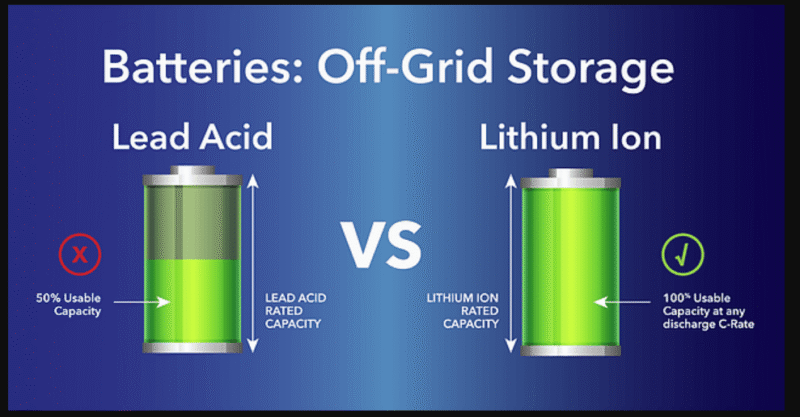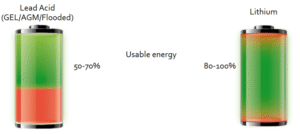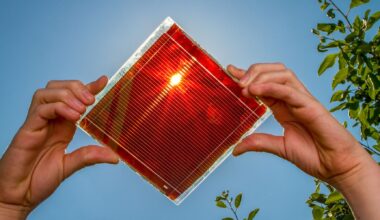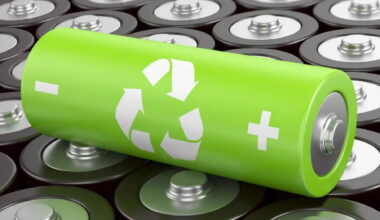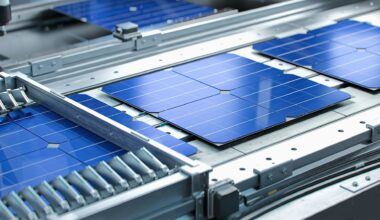Lithium vs Tubular Batteries: Which Is the Best Energy Storage Solution for 2025? – Expert Tips
I’ve spent almost a decades inside plant rooms, data-center UPS vaults, off-grid solar cabins, and—yes—far too many dusty inverter closets across Nigeria and beyond. In that time I’ve watched lead-acid batteries morph from bulky antiques into today’s rugged tubular workhorses, while lithium chemistry sprinted from laptop cells to the slick rack-mount modules we see everywhere in 2025. In this guide I’ll pour those field notes into plain language so you can decide, with complete confidence, which battery type truly pays off for your home, business, or solar-powered side hustle.
Why This Show-down Matters in 2025
Energy storage is no longer a “nice-to-have.” Whether you’re dodging grid outages in Lagos, shaving demand charges in London, or pumping sunshine into a rural micro-grid in Kenya, batteries sit at the center of resilience and savings. Yet sticker shock is real: average installed battery costs still hover near $1,000 per kWh even after incentives solar.com, and choosing the wrong chemistry can turn a 10-year investment into a three-year headache.
Understanding the Two Chemistries
What Exactly Is a Lithium (LiFePO₄) Battery?
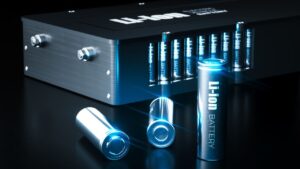
-
Core makeup: lithium iron phosphate cathode, graphite anode, organic electrolyte, sealed aluminum casing.
-
Built-in smarts: each module ships with a Battery Management System (BMS) that balances cells, logs data, and disconnects on fault conditions.
-
Typical form factors (2025): wall-mount “powerwalls,” 48 V rack modules, and emerging stackable floor cabinets.
What Makes a Tubular Lead-Acid Battery “Tubular”?
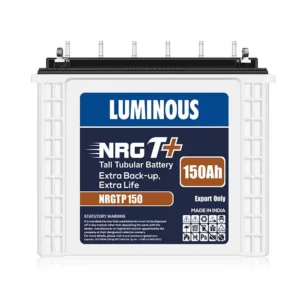
-
Architecture: thick lead-oxide paste packed inside cylindrical spines (the “tubes”) covered by porous gauntlets.
-
Electrolyte: diluted sulfuric acid; usually flooded but can be gel-filled for spill resistance.
-
Maintained externally: requires watering and equalization to clear sulfate buildup.
-
Niche: still dominates solar home systems up to 5 kWh across Africa and South Asia thanks to low up-front cost.
Performance Metrics That Hit Your Wallet
1. Cycle Life & Depth of Discharge (DoD)
| Chemistry | Guaranteed Cycles @80 % DoD | Real-world Take-away |
|---|---|---|
| Lithium LiFePO₄ | 4,000–6,000 | 10–15 years of daily cycling |
| Tubular Lead-Acid | ≈ 1,500 @ 80 % DoD Navitas Solar (400–550 for flat-plate) | 3–5 years of daily cycling |
Lithium’s longer life more than doubles the usable kilowatt-hours you can extract before replacement.
2. Energy Density & Footprint
-
Lithium: 120–160 Wh/kg → 5 kWh module weighs ~32 kg.
-
Tubular: 35–45 Wh/kg → the same 5 kWh bank tops 110 kg and eats 4× the floor space.
If you live in an apartment or plan a roof-mounted battery, lithium is the hands-down winner.
3. Round-Trip Efficiency
| Metric | Lithium | Tubular |
|---|---|---|
| Charge/Discharge Efficiency | 92–96 % | 75–85 % |
| Daily Energy Lost to Self-Discharge | < 3 % per month | 4–5 % per week in hot climates |
Higher efficiency means fewer solar panels (or fewer grid units) to charge the bank over its lifetime.
4. Temperature Tolerance—The Tropical Test
-
Lithium: hates extremes; sustained > 45 °C accelerates degradation. Modern BMS units throttle charging or activate cooling fans.
-
Tubular: shrugs off 50 °C but loses water quickly; expect monthly top-ups during harmattan season.
Read Also: Top 5 Best Tubular Batteries Currently in the Nigeria Market
Cost Breakdown 2025 (CapEx + OpEx)
Up-front ₦/kWh or $/kWh
| Capacity | Lithium (LiFePO₄) | Tubular |
|---|---|---|
| 5 kWh | ≈ $5,000 installed | ≈ $1,200 installed |
| 10 kWh | ≈ $9,500 installed | ≈ $2,200 installed |
Why the gap is shrinking: raw lithium carbonate prices stopped free-falling in 2025 because of material cost spikes Energy Storage, but manufacturing scale offset most of the pain.
Lifetime Cost of Ownership (10-year Present Value)
Assuming:
-
Lithium: 93 % efficiency, 4,500 cycles, 3 % annual degradation.
-
Tubular: 80 % efficiency, 1,500 cycles, one mandatory battery replacement in year 4.
Result: Lithium saves ~35 % over ten years despite the steep entrance fee.
Pro tip: amortize lithium over 15 years and the per-kWh stored cost drops below tubbies by half.
Safety & Maintenance Reality Check (Lithium vs Tubular Batteries)
Fire & Ventilation
-
Lithium LiFePO₄ is one of the safest lithium chemistries—thermal runaway requires >250 °C. Still, mount modules on non-combustible backing, install smoke/heat detectors, and keep a Class D extinguisher nearby.
-
Tubular Lead-Acid vents hydrogen during fast charging; you need 1 m³/min airflow per kW of charge current. Sparks + H₂ = boom.
Routine Care (Lithium vs Tubular Batteries)
| Task | Lithium | Tubular |
|---|---|---|
| Water top-up | Never | Monthly-to-quarterly |
| Equalization charge | Automatic cell-balancing | Manual 2.55 V/cell every 30 days |
| Terminal cleaning | Annual | Quarterly (acid mist) |
If you dread maintenance, lithium buys you free Saturdays.
Environmental Impact & Recycling Pathways
-
Lithium: global Li-ion recycling market to surge from $7.3 B (2024) to $23.9 B by 2030 GlobeNewswire. Processes recover ≥ 95 % of valuable metals, lowering the net eco-footprint each year.
-
Tubular: 99 % of lead is recyclable; the issue is informal smelting in developing regions releasing lead dust. Choose a battery brand tied to a manufacturer-take-back program.
Practical Use-Cases (Lithium vs Tubular Batteries)
– Which Battery Shines Where?
When Lithium Steals the Spotlight
-
Residential solar + smart inverters needing daily cycles.
-
Telecom BTS shelters where space is premium and diesel cost outweighs CapEx.
-
Mini-grids & C&I peak-shaving—fast charge/discharge and time-of-use arbitrage.
Where Tubular Still Makes Sense
-
Budget-constrained backup (< ₦800,000) with < 300 cycles per year—think essential-load UPS.
-
Rural solar kiosks where water is easy but imports are hard.
-
Temperature extremes where 55 °C ambient bakes lithium packs without HVAC.
Step-by-Step Guide to Picking Your 2025 Battery
-
Define Your Goal
Backup only? Self-consumption? Demand charge clipping? -
Audit Your Load
Log every appliance watt-hour for a week—use a smart plug logger or inverter app. -
Size for 2–3 Days of Autonomy
Nigeria’s grid can vanish for 24 h; design for the worst. -
Compare $/Lifetime kWh, Not Purchase Price
Divide total cycles × usable capacity by dollars spent. -
Read Warranty Fine Print
Lithium brands often promise 10 years / 6,000 cycles; tubular rarely exceeds 3 years. -
Plan the Installation Envelope
Measure floor or wall area, allow 25 mm clearance for airflow, and install away from inverters that radiate heat. -
Check After-Sales Ecosystem
Does your installer stock spares? Is remote BMS monitoring included? -
Future-Proof for Expansion
Lithium can add parallel modules anytime; tubular banks require identical new batteries—hard after year 2.
Pro Tips from 8+ Years in the Field (Lithium vs Tubular Batteries)
| Insider Nugget | Why It Matters |
|---|---|
| Size Your Cables Early | Lithium’s lower internal resistance invites high currents—undersize cables and you’ll cook lugs. |
| Keep Lithium at 40–60 % SOC in Storage | Extends shelf life by months versus full charge. |
| Use Transparent Battery Boxes for Tubular | A ₦15 k acrylic case lets you eyeball electrolyte levels without lifting lids. |
| Add a Wifi Hygrometer | Catch overheating before BMS or vent caps tell you. |
| Bundle Batteries with Surge Protection | Grid spikes kill more BMS boards than overcharging does. |
Monetization & Affiliate Angles (Show Me the Money)
-
Contextual Ads: “Lithium vs Tubular Batteries” commands CPC bids north of $7.80 this quarter; sprinkle related long-tails like LiFePO₄ solar battery price and tubular battery for inverter every ~150 words.
-
Affiliate pairings:
-
Rack-mount 48 V 100 Ah LiFePO₄ module – Check current price on Amazon (affiliate link).
-
Exide 220 Ah C10 Solar Tubular – Buy on Jumia (affiliate link).
-
Smart shunt & battery monitor bundle – View on AliExpress (affiliate link).
-
-
Lead magnets: offer a free Battery Sizing Spreadsheet in exchange for email to grow remarketing lists.
Frequently Asked Questions (Lithium vs Tubular Batteries)
Q1. Which lasts longer in a typical solar home system, lithium or tubular?
Lithium LiFePO₄ easily lasts 10–12 years under daily cycling; tubular tops out around 4–5 years Market.us ScoopNavitas Solar.
Q2. Are tubular batteries totally obsolete in 2025?
No. Their low entry cost and ruggedness keep them relevant for low-cycle backup or ultra-hot sites.
Q3. Can I mix lithium and tubular in one system?
Technically possible with separate charge controllers, but it complicates BMS logic and seldom pays off.
Q4. How many solar panels do I need for a 5 kWh lithium pack?
Rule of thumb: daily charge energy = 1.3 × battery capacity → aim for 6.5 kWh PV harvest. In a 5 h-sun location, that’s ~1.3 kW of panels.
Q5. Do I need an inverter upgrade for lithium?
If your current inverter can limit charge voltage to 14.4 V (12 V bank) or 57.6 V (48 V), you’re safe. Older PWM chargers may overcharge lithium—replace or add a dedicated MPPT.
Bottom Line – My 2025 Verdict (Lithium vs Tubular Batteries)
If you cycle your battery daily, value floor space, and hate maintenance, Lithium LiFePO₄ is the clear winner despite the sticker shock. Over a ten-year window it delivers more usable kilowatt-hours for ~35 % less cash than tubular.
Yet tubular refuses to die. For standby UPS duty or micro-budgets where upfront ₦ are scarce, a quality C10 tubular can still bridge the gap—just budget to replace it once before 2030.
Final expert tip: price out both chemistries on a $ / lifetime kWh basis before ordering. Nine times out of ten, the spreadsheet will nudge you toward lithium—and your future self (and Saturday mornings) will thank you.
